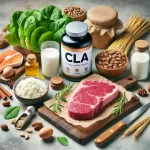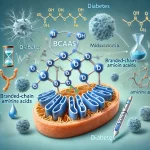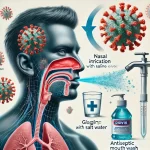When it comes to building muscle, two key factors play a significant role in helping you achieve your goals: creatine and protein. Both of these supplements can help increase muscle mass, enhance strength, and speed up recovery time, but understanding how much you need and when to use them is crucial. In this article, we’ll explore the optimal amounts of creatine and protein you should consume, the difference between “bulking” and “cutting,” and the best tips for achieving a well-defined, muscular physique.
How Much Creatine Do You Need for Muscle Growth?
Creatine is one of the most popular and well-researched supplements in the fitness world. It’s a naturally occurring substance found in muscles and helps provide energy during high-intensity exercise. Supplementing with creatine can increase the availability of energy, allowing you to train harder and longer.
Recommended Dosage of Creatine
- Loading Phase: Many experts recommend starting with a loading phase to saturate your muscles quickly. This involves taking 20 grams per day (split into 4 doses of 5 grams) for 5-7 days. This will boost creatine levels in the muscles rapidly.
- Maintenance Phase: After the loading phase, you can reduce your intake to 3-5 grams per day. This maintenance dose will keep your muscles saturated with creatine.
Alternatively, you can skip the loading phase and take 3-5 grams per day directly. It will take longer to reach full saturation, but it will still be effective.
When to Take Creatine
- Pre-Workout: Taking creatine about 30 minutes before a workout can help you maximize energy during intense sessions.
- Post-Workout: Creatine taken post-workout, particularly when combined with a protein shake or carbohydrate source, can help with recovery and muscle replenishment.
- On Rest Days: You can continue taking creatine on non-training days to maintain muscle saturation.
How Much Protein Do You Need for Muscle Growth?
Protein is the building block of muscle. During weightlifting or intense exercise, you create tiny tears in your muscle fibers, and protein helps repair and build those fibers, making them larger and stronger.
Recommended Protein Intake
- General Guidelines: For general muscle growth, a good rule of thumb is to consume 1.6 to 2.2 grams of protein per kilogram of body weight (g/kg). For example, if you weigh 75 kg (165 lbs), your daily protein intake should range between 120 and 165 grams.
- For Intensive Muscle Building: If you’re aiming for serious muscle mass gains or competing in bodybuilding, you might push that upper limit to around 2.4 grams of protein per kilogram of body weight. However, this higher protein intake is generally not necessary for most people unless you’re in a caloric surplus (bulking) or engaged in extreme training.
When to Consume Protein
- Post-Workout: Aim to consume protein within 30 minutes to 2 hours after your workout. This is often referred to as the “anabolic window,” when your muscles are more receptive to nutrients.
- Throughout the Day: It’s important to spread protein intake throughout the day in multiple meals, ideally every 3-4 hours, to maximize muscle protein synthesis.
Bulking vs. Cutting: What’s the Difference?
Understanding the difference between bulking and cutting is crucial when it comes to adjusting your diet and workout regimen for optimal muscle development.
Bulking
Bulking is the process of eating in a caloric surplus to gain muscle mass. The goal is to consume more calories than your body burns, which provides extra energy for muscle growth. While you’ll gain muscle, you may also gain some fat during this phase.
- Caloric Surplus: Aim for a surplus of about 300-500 calories above your daily caloric needs. This should come from both protein and healthy carbohydrates (and some fats).
- Strength Training Focus: A solid weight training routine, including heavy lifts and compound movements, is essential during a bulk to maximize muscle gains.
Key Considerations for Bulking:
- Protein: Maintain a high protein intake (1.6-2.2g per kg of body weight).
- Carbs: Focus on consuming nutrient-dense, high-carb foods to fuel workouts and recovery.
Cutting
Cutting is the phase where the focus shifts to losing excess body fat while maintaining as much muscle mass as possible. This requires a caloric deficit, where you consume fewer calories than your body burns.
- Caloric Deficit: Aim for a caloric deficit of about 300-500 calories below your maintenance level. This will encourage fat loss without sacrificing muscle mass.
- Strength Training Focus: Strength training is still essential during cutting to preserve muscle while you lose fat. You might reduce the volume of your workouts to maintain strength without overexerting yourself.
Key Considerations for Cutting:
- Protein: It becomes even more critical to maintain high protein intake (around 2.2g per kg) to prevent muscle loss.
- Carbs & Fats: Maintain a balanced intake of healthy fats and carbs, focusing on nutrient-dense options to avoid energy depletion.
The Deal with “Bulging” Muscles and Cutting for Definition
- “Bulging” Muscles: This typically refers to the appearance of muscles that are large and full. This is the result of bulking, where muscles are engorged with both glycogen and water retention, giving them a fuller look.
- Cutting for Definition: When cutting, the goal is to reduce fat around the muscles to enhance their definition. As you shed body fat, the muscles become more visible, and you achieve a leaner, more sculpted physique. This often involves reducing body fat to around 10-12% for men or 20-22% for women to achieve the best muscle definition.
Tutorials and Tips for Effective Muscle Building
- Progressive Overload: Always strive to progressively overload your muscles by gradually increasing the weight you lift or the number of reps you perform. This is key to continuous muscle growth.
- Compound Movements: Focus on compound exercises like squats, deadlifts, bench presses, and pull-ups. These movements work multiple muscle groups at once, helping you build more muscle overall.
- Rest and Recovery: Allow your muscles time to recover and rebuild. Aim for 7-9 hours of sleep per night, and consider taking 1-2 rest days per week from heavy training.
- Track Your Nutrition: Use a food diary or an app to ensure you’re meeting your protein and caloric goals. This helps ensure you stay on track with your muscle-building or fat-loss phase.
- Stay Hydrated: Dehydration can impair muscle function and recovery. Make sure to drink plenty of water throughout the day.
Conclusion
Building muscle is a complex process that requires a balance of nutrition, exercise, and recovery. To maximize muscle growth, aim for the right amounts of creatine and protein, and understand how to adjust your diet and training for bulking and cutting phases. By focusing on progressive overload, maintaining a balanced diet, and staying consistent with your workouts, you’ll be well on your way to achieving your muscle-building goals.









